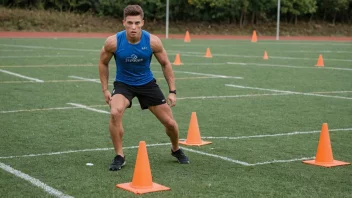In the ever-evolving landscape of technology and communication, social media has emerged as a powerful tool for spreading awareness and fostering engagement in various sectors, including water sports. The thrill of activities such as surfing, sailing, kayaking, and diving comes with inherent risks, underscoring the importance of safety awareness. This article explores how individuals, organizations, and enthusiasts can leverage social media platforms to promote safety practices, share knowledge, and create a community dedicated to water sports safety.
Understanding the Role of Social Media in Water Sports Safety
Social media serves as a multifaceted platform that facilitates communication, education, and community building. Its role in water sports safety awareness can be understood through several key functions:
- Information Dissemination: Social media allows for the rapid sharing of safety tips, guidelines, and resources that can be crucial for water sports enthusiasts.
- Community Engagement: Platforms can create a sense of belonging among participants, encouraging them to share their experiences and safety practices.
- Real-Time Updates: In case of emergencies, social media can be utilized for timely updates regarding weather conditions, safety alerts, and local regulations.
- Educational Content: Videos, infographics, and articles can be shared to educate the community about safety gear, best practices, and new technologies.
Identifying Your Audience
To effectively use social media for safety awareness, it is vital to identify your target audience. Understanding the demographics, interests, and behaviors of water sports participants can help tailor your messaging. Key audiences may include:
- Recreational Users: Individuals engaged in water sports for leisure.
- Professional Athletes: Competitive participants who may require specialized safety information.
- Coaches and Instructors: Those responsible for training, who need to emphasize safety protocols.
- Parents and Guardians: Individuals concerned about the safety of younger participants.
Creating Compelling Content
Once your audience is identified, the next step is to create compelling and relevant content. Here are some content creation strategies:
1. Share Safety Tips and Guidelines
Regularly post tips focused on various water sports activities. This could include:
- Importance of wearing life jackets.
- Guidelines for safely using equipment.
- Best practices for dealing with environmental hazards.
2. Leverage Visual Content
Images and videos are more engaging than text alone. Consider posting:
- Infographics that illustrate safety protocols.
- Video demonstrations of proper techniques.
- Live sessions discussing safety measures.
3. Share Personal Stories
Encourage community members to share their experiences. Personal stories can be powerful in conveying the importance of safety. Highlight stories that:
- Showcase near-miss incidents to educate others.
- Feature successful safety practices.
- Involve testimonials from safety training sessions.
Engaging with Your Community
Building a community around water sports safety is essential. Here are strategies to engage:
1. Create Dedicated Groups
Utilize platforms like Facebook or Reddit to create groups focused on water sports safety. These groups can serve as forums for discussion, where members can ask questions, share tips, and offer support.
2. Host Webinars and Live Q&A Sessions
Organize online events that focus on specific safety topics. Invite experts to discuss:
- Safety gear innovations.
- Emergency response techniques.
- Environmental considerations in water sports.
3. Collaborate with Influencers and Experts
Partner with influencers in the water sports community who are passionate about safety. Their reach can amplify your message and bring attention to critical safety practices.
Utilizing Hashtags for Wider Reach
Hashtags can significantly increase the visibility of your posts. Use relevant hashtags to reach a broader audience, such as:
- #WaterSafety
- #SafeWaterSports
- #WaterSportsAwareness
- #SafetyFirst
Additionally, consider creating a unique hashtag for your campaign, encouraging followers to use it in their posts.
Monitoring and Responding to Feedback
Social media is a two-way street. It's essential to monitor engagement and respond to feedback:
1. Analyze Engagement Metrics
Utilize social media analytics tools to track engagement metrics. This includes likes, shares, comments, and reach. Understanding what content resonates can help refine your strategy.
2. Foster Open Communication
Encourage followers to share their thoughts and experiences. Responding to comments and messages shows that you value their input and fosters a supportive community.
Staying Updated with Trends and Technologies
The landscape of water sports safety is constantly evolving. Stay informed about the latest trends and technologies:
- Follow industry leaders and organizations.
- Subscribe to newsletters focused on water sports safety.
- Participate in forums and discussions about new safety gear and technologies.
Case Studies: Successful Campaigns
Examining successful social media campaigns can provide insights into effective strategies:
1. The Water Safety Campaign
This campaign focused on drowning prevention and successfully reached millions through a series of impactful videos and testimonials shared across various platforms.
2. Local Surfing Community Initiative
A local surfing community launched a safety awareness month, utilizing social media for daily tips, live discussions, and community challenges that encouraged safe practices.
Conclusion
Social media presents a unique opportunity to enhance water sports safety awareness. By understanding your audience, creating compelling content, fostering community engagement, and staying updated with trends, you can leverage these platforms to promote safety in water sports effectively. The key to success lies in consistent messaging, active participation, and a genuine commitment to community welfare. As more individuals engage with safety practices, the water sports community can thrive while prioritizing the well-being of its participants.






